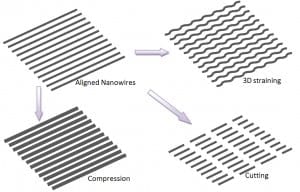You would think we humans would have an innate alliance with water.
As Isaac continues to pour down rain on the Gulf Coast and test New Orleans’s new flood-prevention system, there are lessons we can learn from other cities about how to design a city to make the most of too much water.
You would think we humans would have an innate alliance with water.
After all, the ocean covers 71% of the Earth’s surface. Our own body mass is more than 50% water. And each of us needs some 50 liters of water a day (for drinking, sanitation, hygiene) to maintain our water balance, although Americans use notably more than that. Water is life and death; it’s our primal paradox.
And yet, that colorless, transparent liquid that demands our attention when it falls furiously from the sky (or conspicuously doesn’t) continues to bewilder us, threatening individuals, society and the environment, more so than ever before–a change in status that was noted by the World Economic Forum this past year. It moved “water supply crises” in all its myriad forms to its list of Top 5 Global Risks. Climate uncertainty, predicted rise in sea level and rapid urbanization are likely conspiring to create the perfect ugly storm, which we’re seeing with ubiquity lately. This year alone, floods have devastated China, India, Bangladesh, the Philippines, the UK, Florida, Minnesota, Haiti, the list goes on and now includes the aftermath of a hurricane called Isaac, all while America’s heartland languishes in drought.
With sudden deluges, our immediate response is to get rid of the offending water fast. Storm water is the enemy. It can cause damage and kill in its ferocity.
But what if people and governments took another view of storm waters that might cause floods and adopted a broader vision of water as life? What if we forged an alliance with storm water, slowed it down, and turned it into a temporary amenity and even a long-term economic benefit and lifeblood for our cities and communities?
Soccer fields might turn into temporary ponds with out even flipping a switch, giving the surging water a place to go. Streets would be designed to become canals (with appropriate warning signage when they do), putting the homes along them above most storm water levels. Heck, gulley washers (as I refer to furious rains) might even be construed as something good for the rose bushes or, more generally, the landscape, which in turn, keeps our cities cool and sequesters the carbon dioxide that’s likely causing the problem in the first place.
We’re doing some of this and more in Houston, where we face a never-ending Gulf stream of bad storms with nice kids’ names along with the consequences of our historic lack of urban planning (which we are now trying to correct)–not to mention a clay soil that doesn’t drink water very efficiently.
via FastCoExist
The Latest Streaming News: Turning Flood Waters Into Liquid Assets updated minute-by-minute
Bookmark this page and come back often
Latest NEWS
Latest VIDEO









